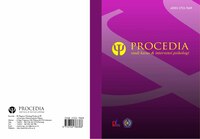Empty chair therapy untuk menurunkan gejala depresi pada remaja korban perundungan
DOI:
https://doi.org/10.22219/procedia.v11i2.25508Keywords:
Bullying, depression, empty chair, gestalt therapy, teenagerAbstract
Depression is a disorder that leads to a more negative mood. The subject shows symptoms of depressive disorder in the form of depression affect, lost interest in doing activities or hobies and increased hypersomnia. Subject was an 15-year-old woman who had experienced as victims of bullying. The purpose of this case study is to reduce depressive symptoms through the empty chair. There are feelings of guilt and worthlessness, trouble concentrating to complete the school task, and looking future improperly. The assessment method were used interview, observation, psychological test, and BDI (Beck Depression Inventory). The intervention used in this case was Gestalt Therapy with Empty Chair Technique. Intervention target to decreased depression symptoms and helps subject to live well everyday. The results of the intervention showed that empty chair therapy effective in reducing depression symptoms in subject. There was decreased BDI score from 37 to 22.
Depresi adalah gangguan yang mengarah ke suasana hati yang lebih negatif. Subyek menunjukkan gejala gangguan depresi berupa afek depresi, kehilangan minat dalam melakukan aktivitas atau hobi dan peningkatan hipersomnia. Subjek adalah seorang wanita berusia 15 tahun yang pernah mengalami sebagai korban bullying. Tujuan dari studi kasus ini adalah untuk mengurangi gejala depresi melalui kursi kosong. Ada perasaan bersalah dan tidak berharga, sulit berkonsentrasi untuk menyelesaikan tugas sekolah, dan memandang masa depan dengan tidak tepat. Metode penilaian yang digunakan adalah wawancara, observasi, tes psikologi, dan BDI (Beck Depression Inventory). Intervensi yang digunakan dalam kasus ini adalah Terapi Gestalt dengan Teknik Kursi Kosong. Target intervensi untuk mengurangi gejala depresi dan membantu subjek untuk hidup dengan baik setiap hari. Hasil intervensi menunjukkan bahwa terapi kursi kosong efektif dalam mengurangi gejala depresi pada subjek. Terjadi penurunan skor BDI dari 37 menjadi 22.
Downloads
References
Agustin, N. L. (2019). Effectiveness Of Gestalt Counseling Empty Chair Engineering To Minimize Feeling Of Trauma Victims Bullying. Proceeding Humanities: Teacher Training and Education, 1(1), 22-27.
Agustriyana, N. A., & Suwanto, I. (2017). Fully human being pada remaja sebagai pencapaian perkembangan identitas. Jurnal Bimbingan Konseling Indonesia, 2(1), 9-11.
Angus, L., Goldman, R., & Mergenthaler, E. (2008). Introduction. One case, multiple measures: An intensive case-analytic approach to understanding client change processes in evidence-based, emotion-focused therapy of depression. Psychotherapy Research, 18(6), 629-633. https://psycnet.apa.org/doi/10.1080/10503300802430673
Corey, Gerald. (2012). Teori Dan Praktek Konseling & Psikoterapi. Bandung: Refika Aditama.
Dianovinina, K. (2018). Depresi pada remaja: gejala dan permasalahannya. Jurnal Psikogenesis, 6(1), 69-78. https://doi.org/10.24854/jps.v6i1.634
Faiza, T. L. (2019). Perbedaan Tingkat Depresi pada Korban Bullying Verbal dan Cyberbullying pada Remaja (Doctoral dissertation, University of Muhammadiyah Malang).
Fatoni, M. F. (2018). Teknik kursi kosong untuk meningkatkan rasa percaya diri terhadap korban bullying di UIN Sunan Ampel Surabaya (Doctoral dissertation, UIN Sunan Ampel Surabaya).
Gudnanto. (2012). Pendekatan Konseling. Jawa Tengah: Fakultas Keguruan Ilmu Pendidikan, Universitas Muria Kudus.
Gunnell, D., Kidger, J., & Elvidge, H. (2018). Adolescent mental health in crisis. Bmj, 361. https://doi.org/10.1136/bmj.k2608
Hanapi, T. F. (2021). Teknik kursi kosong: Terapi Gestalt untuk mengurangi perasaan marah remaja kepada ayah. Procedia: Studi Kasus dan Intervensi Psikologi, 9(3), 088-093. https://doi.org/10.22219/procedia.v9i3.16327.
Hidroar, A. N. N., & Muhid, A. (2022). Efektivitas Teknik Empty Chair Dalam Layanan Bimbingan Konseling Untuk Rehabilitasi Korban Bullyinging. Counseling AS SYAMIL: Jurnal Ilmiah Bimbingan Konseling Islam, 2(1), 21-29.
Kolmannskog, V. (2018). The empty chair: Tales from gestalt therapy. Routledge.
Krull, A., Hirsch, P., Rother, C., Schiffrin, A., & Krull, C. (2020). Artificial-intelligence-driven scanning probe microscopy. Communications Physics, 3(1), 54. https://doi.org/10.1038/s42005-020-0317-3
Jannah, Z., & Wangid, M. N. (2023). Empty Chair Technique to Overcome Anxiety of Bullying Victims. In the International Seminar on Delivering Transpersonal Guidance and Counselling Services in School (ISDTGCSS 2022) (pp. 47-53). Atlantis Press.
Nevid, Jeffrey S, dkk. (2005). Psikologi Abnormal edisi kelima Jilid 1. Jakarta: Erlangga.
Ramadhani, A., & Retnowati, S. (2013). Depresi pada remaja korban bullying. Jurnal Psikologi, 9(2), 73-79. http://dx.doi.org/10.24014/jp.v9i2.165
Rijn, B. V & Wild, C. (2013). Humanistic and Integrative Therapies for Anxiety and Depression: Practice-Based Evaluation of Transactional Analysis, Gestalt, and Integrative Psychotherapies and Person-Centered Counseling. Transactional Analysis Journal. 43(2), 150-163. https://doi.org/10.1177/0362153713499545
Santrock, John W. (2011). Perkembangan Anak Edisi 7 Jilid 2. Jakarta: Erlangga.
Tyson, G. M., & Range, L. M. (1987). Gestalt dialogues as a treatment for mild depression: Time works just as well. Journal of Clinical Psychology, 43(2), 227–231.
Winston, C. N. (2016). An existential-humanistic-positive theory of human motivation. The Humanistic Psychologist, 44(2), 142. https://doi.org/10.1037/hum0000028
Downloads
Published
How to Cite
Issue
Section
License
Copyright (c) 2023 Anindyah Sekarini, Siti Muthia Dinni

This work is licensed under a Creative Commons Attribution-NonCommercial 4.0 International License.






